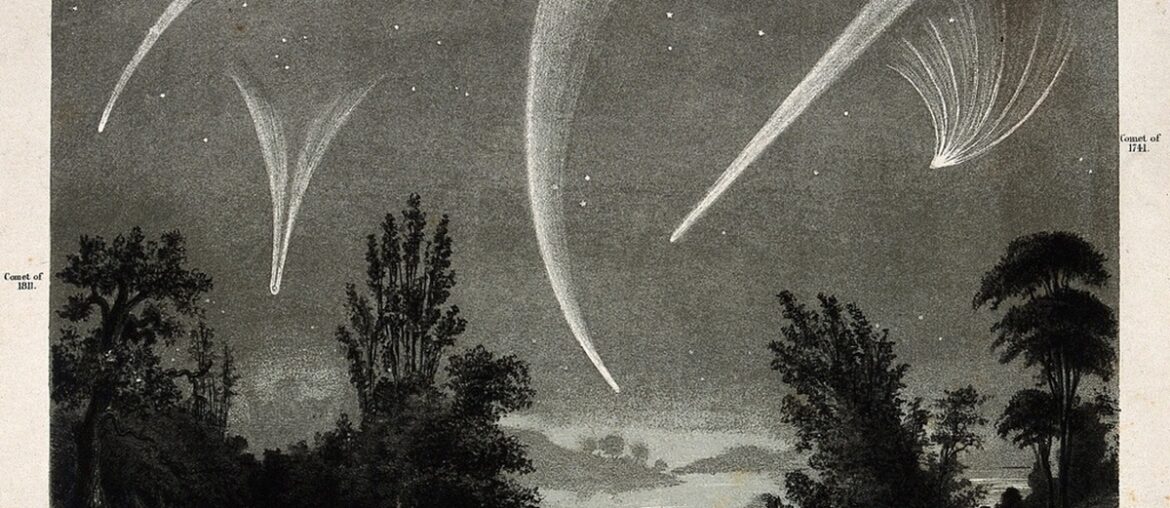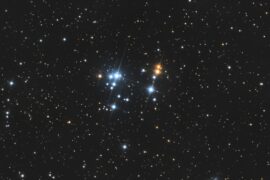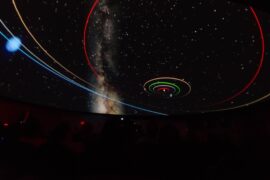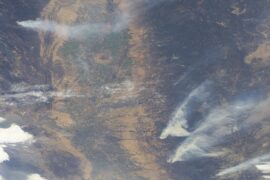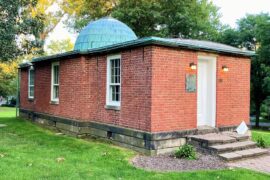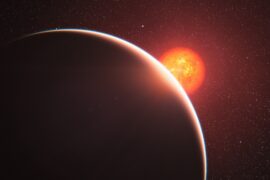The sky has a way of reminding us that some rare events leave outsize marks on history. In 1859 the Carrington Event produced bright auroras far from the poles and induced currents that made telegraph equipment spark and fail, while the 1908 Tunguska blast flattened forest across roughly 2,000 km² of Siberia and remains a vivid example of an unexpected airburst. Those incidents feel remote until you remember how much modern life depends on long wires, satellites, and high-altitude flights that can be affected by the same forces.
Every few generations the sky reminds us it can shift human plans: some cosmic phenomena recur on roughly centennial timescales and carry implications for infrastructure, science, and what we can expect from the near‑Earth environment. This piece lists 10 notable cosmic events that happen every 100 years and explains the evidence, likely impacts, and concrete examples you can point to when discussing resilience and scientific opportunity.
The article is organized into three categories — Solar & space weather, Near‑Earth objects, and Astronomical sightings & cycles — and each entry includes historical context, risk or scientific payoff, and real-world examples. With clear links to assessments from agencies such as NASA and NOAA, you’ll come away with a sense of what’s plausible on century scales and what communities and scientists are doing about it.
Solar and Space Weather Events
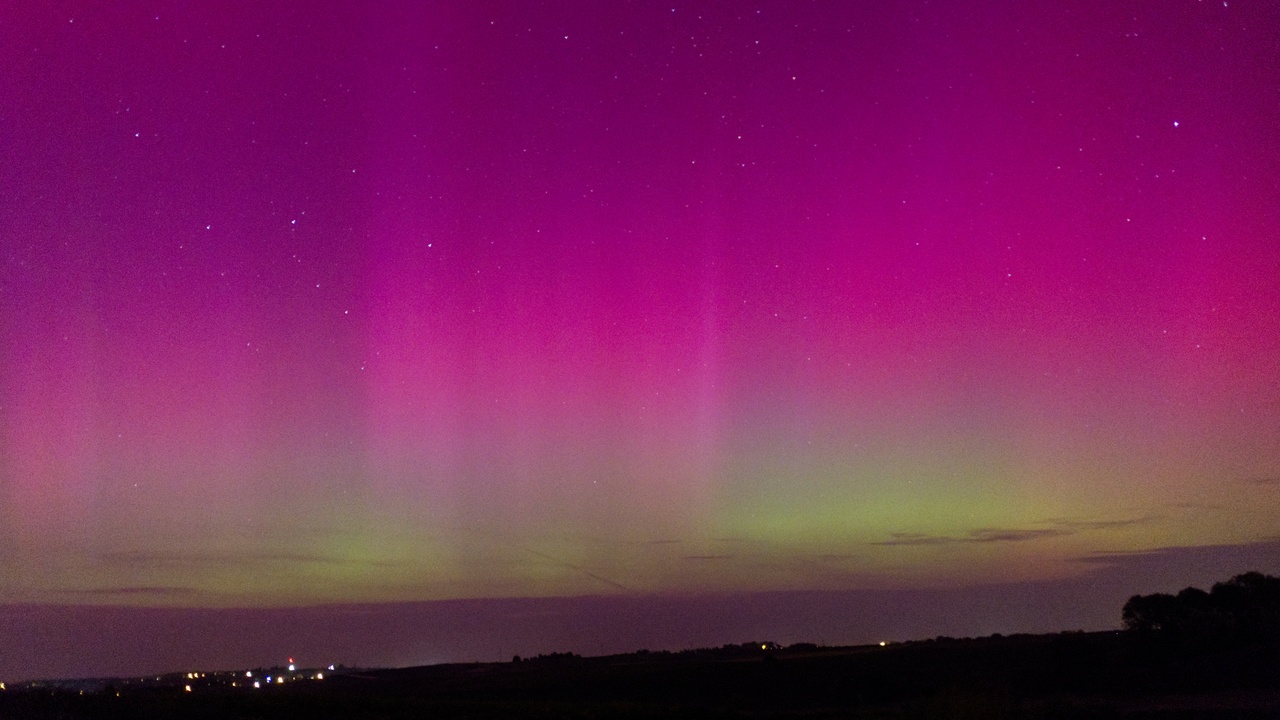
The Sun cycles every ~11 years in sunspots, but it also produces rarer extremes and prolonged swings that matter on century scales. Solar storms range from frequent, mild events that interfere with HF radio to Carrington‑class explosions that can drive geomagnetically induced currents in power grids and damage satellites. Agencies like NOAA’s Space Weather Prediction Center and NASA’s heliophysics programs assess both immediate threats and statistical return periods for extreme events.
Why care? Because a century‑scale solar extreme can cause cascading failures: long transmission lines suffer voltages and transformer damage, satellite electronics face outage and degradation, and polar-flight crews and passengers see elevated radiation. Historical records and modern space‑based monitors give scientists ways to estimate how often the worst storms recur and what mitigation steps make sense for utilities and space operators.
1. Carrington‑level Geomagnetic Storms (≈ once per 100–200 years)
Carrington‑class storms are among the most disruptive space‑weather events and many studies estimate return periods on roughly 100–200 years. The 1859 Carrington Event produced auroras seen near the equator and induced currents that made telegraph operators receive shocks and continue sending messages without batteries.
Modern infrastructure shows the same vulnerability: a strong geomagnetic storm in March 1989 overloaded Hydro‑Québec transformers and caused a province‑wide blackout. NOAA and NASA regularly warn that a comparable event today would threaten transformers, pipelines, and satellites unless utilities and operators prepare.
2. Large Solar Energetic Particle (SEP) Events (century-scale rarities)
Solar energetic particle events accelerate high‑energy protons and heavier ions that can penetrate spacecraft shielding and raise radiation doses for crew and high‑altitude flyers. Extreme proton events are rare but dangerous: the 1956 solar proton event produced a prominent ground‑level enhancement and was one of the strongest in the modern record.
For satellites, SEPs increase the chance of single‑event upsets and long‑term degradation of electronics. For human missions, agencies use real‑time monitoring and operational limits (for example, moving crews to better‑shielded modules) based on guidance from NASA and other space agencies.
3. Extreme Low‑Latitude Auroras (century‑notable displays)
When geomagnetic storms reach the highest intensity, auroral ovals expand and auroras appear at unusually low latitudes — a visible sign that infrastructure may be under stress. Observers reported brilliant low‑latitude auroras during the 1859 Carrington Event, with displays so bright people read newspapers at night by their light.
Those auroras are more than spectacle: they are historical markers scientists use to estimate storm strength and timing, and they often coincide with the currents and disturbances that can damage power systems and pipelines.
Near‑Earth Objects and Impact Events
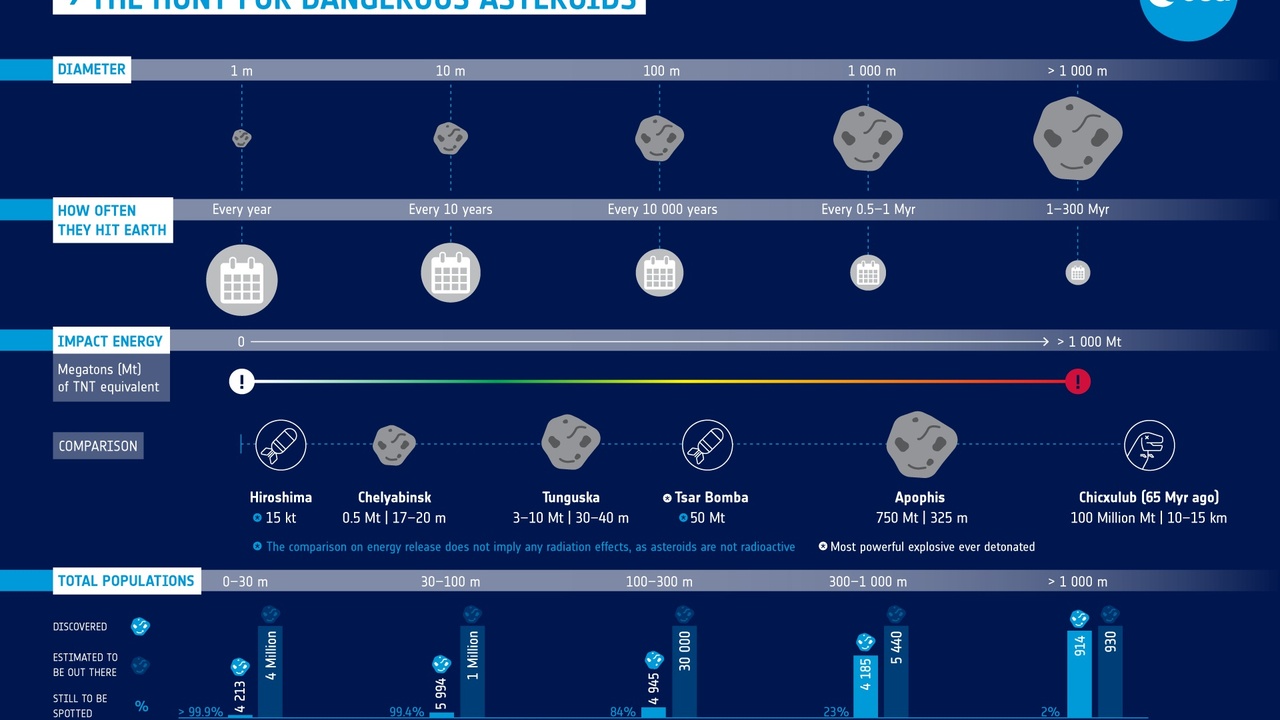
Not all impacts are civilization‑ending, but size matters. Large, planet‑scale impacts are vanishingly rare; smaller objects in the 10–50 m range enter Earth’s atmosphere more frequently and can produce powerful airbursts. Modern surveys run by NASA’s NEO program have cataloged most of the biggest threats, but objects tens of meters across still often arrive with little warning.
These near‑Earth hazards include Tunguska‑style airbursts, notable close approaches by larger asteroids, and the centennial returns of some comets that can heighten meteor shower activity. Understanding frequency across size classes helps governments and scientists plan detection, early warning, and, where feasible, mitigation.
4. Tunguska‑style Airbursts (≈ once per 50–150 years for ~20–50 m objects)
Airbursts from small asteroids can release energy comparable to large conventional explosions. Tunguska (June 30, 1908) flattened roughly 2,000 km² of Siberian forest, while the Chelyabinsk meteor on February 15, 2013 injured about 1,500 people—mostly from broken glass—and damaged buildings.
Population‑weighted frequency estimates place arrival of ~20‑m objects at roughly once per several decades to a century. Chelyabinsk’s energy has been estimated in the hundreds of kilotons of TNT; Tunguska’s yield is often cited in megatons. Those figures drive investment in improved detection of smaller NEOs and in civil preparedness for blast‑wave damage.
5. Close Approaches by Large Near‑Earth Asteroids (decades to century relevance)
Large near‑Earth asteroids pass relatively close on human timescales, and some approaches attract intense scrutiny because early orbital uncertainty can suggest non‑zero impact probabilities. A high‑profile example is 99942 Apophis, which generated concern as its 2029 close approach was refined and monitored to rule out an impact scenario.
Surveys and systems like NASA’s Sentry continually update trajectories so decision makers know whether deflection or evacuation planning is required. Warning time is key: decades allow for deflection concepts, while short notice calls for civil response.
6. Centuries‑to‑century Comet Returns That Raise Meteor Risks
Certain comets have orbital periods on the order of decades to a few centuries, and when they return their debris streams can intensify meteor showers or introduce new dust into Earth’s path. Comet 109P/Swift–Tuttle, the source of the Perseid meteor shower, has a period near 133 years, an example of a comet with clear centennial rhythm.
A comet’s return matters for satellites and atmospheric researchers because enhanced meteor activity increases meteoroid flux through low‑Earth orbit and deposits identifiable ionization trails. Astronomers model comet passages to forecast years of enhanced activity so observatories and operators can prepare.
Astronomical Sightings and Long‑Term Cycles
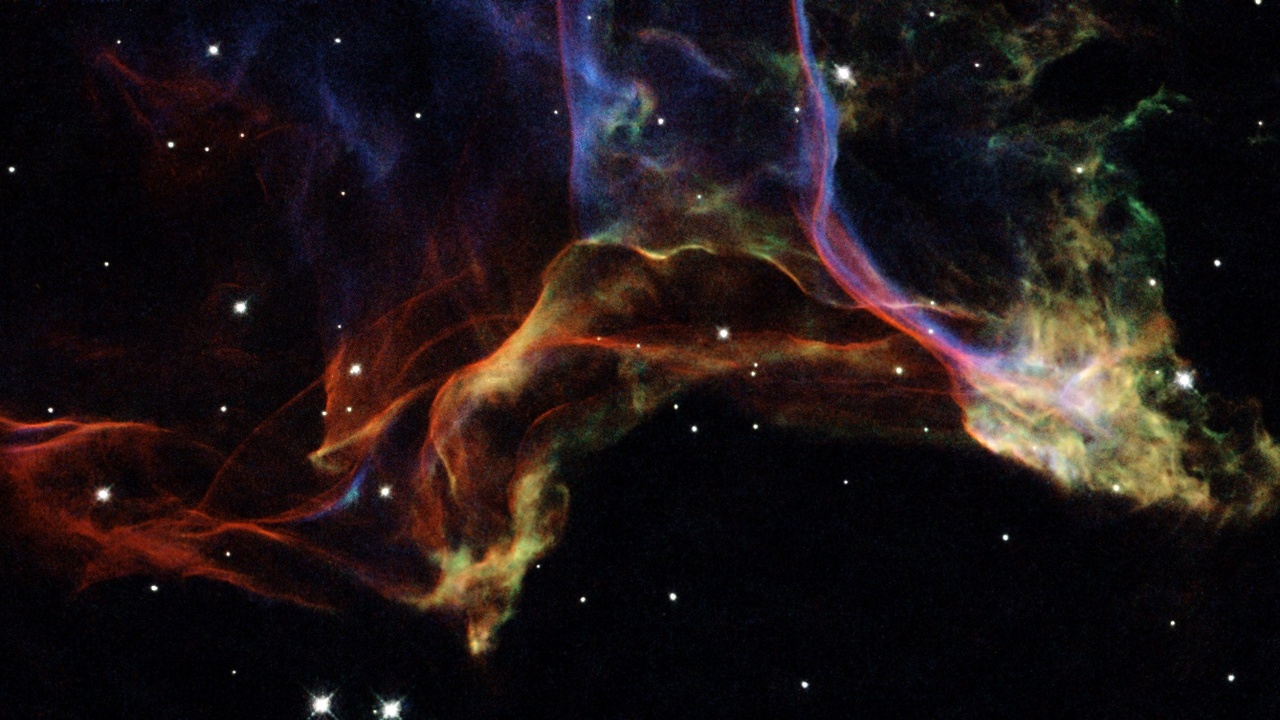
Beyond impacts and space weather, the sky offers rare visible events on centennial scales that shape science and culture. Naked‑eye supernovae, great comets, transits with long paired gaps, and long swings in solar activity have each had outsized influence on observation campaigns, navigation, and sometimes climate research.
These events encourage careful cataloging and international coordination; they also provide timely opportunities for both professional and citizen scientists to collect data that feed into long‑term records and models.
7. Naked‑eye Supernovae and Nearby Explosions (infrequent but century‑notable)
Supernovae in our galaxy that are bright enough to see without a telescope are separated by centuries on average, but when they happen they transform astronomy. SN 1604 (Kepler’s Supernova) was observed in 1604 and recorded across Europe, while SN 1987A appeared in the Large Magellanic Cloud in 1987 and provided a modern laboratory for neutrino and nucleosynthesis studies.
Nearby explosions yield rich scientific payoffs: light curves, spectra, and neutrino detections constrain stellar evolution, while historical records help calibrate the expected frequency of visible events over centuries.
8. ‘Great’ Comet Appearances (occasionally on century timescales)
Great comets become unusually bright and widely visible; they don’t follow strict schedules, but spectacular examples are memorable across generations. Hale‑Bopp in 1997 and Comet West in 1976 drew global attention and produced abundant professional data on coma chemistry and dust properties.
Great comets spur widespread amateur and professional observing, supplying high‑quality spectroscopy and imaging that improve our understanding of primordial solar‑system materials. Their unpredictability makes each bright return an event to plan for, both for science and public outreach.
9. Venus Transits and the 105–121 Year Pattern
Because of orbital geometry, Venus transits occur in a repeating pattern: pairs of transits eight years apart are followed by a long gap of about 105.5 or 121.5 years. The recent pair in 2004 and 2012 won’t be followed by another until 2117 and 2125.
Historically, transit observations were vital for measuring the astronomical unit and improving solar system scale estimates. Today they remain valuable for education and as demonstrations of celestial mechanics, drawing public engagement every few generations.
10. Centennial‑Scale Variations in Solar Activity (grand minima and maxima)
Beyond the 11‑year cycle, the Sun experiences multi‑decadal to centennial swings called grand minima and maxima. The Maunder Minimum (approximately 1645–1715) and the Dalton Minimum (≈1790–1830) are well‑studied examples of prolonged low sunspot counts that correspond with changes in auroral records and climate proxies.
Researchers study these long swings because they influence solar irradiance reconstructions and help place modern variability into a historical context. That work matters for climate attribution and for anticipating baseline levels of space‑weather activity over coming centuries.
Summary
- Centennial solar extremes can cause major infrastructure disruption — transformers, satellites, and aviation are particularly vulnerable; agencies like NOAA and NASA provide monitoring and guidance.
- Tunguska‑class airbursts and Chelyabinsk‑scale events happen within human lifetimes and justify improved detection of 10–50 m objects and civil preparedness measures.
- Some celestial patterns are predictably centennial — for example, Venus transits follow long 105.5/121.5‑year gaps, and certain comets (Swift–Tuttle) return on ~133‑year cycles, affecting meteor activity.
- Support for observation programs and early‑warning systems matters: sustaining NEO surveys, space‑weather monitoring, and scientific follow‑up keeps societies safer and advances knowledge about century‑scale phenomena.
Enjoyed this article?
Get daily 10-minute PDFs about astronomy to read before bed!
Sign up for our upcoming micro-learning service where you will learn something new about space and beyond every day while winding down.

